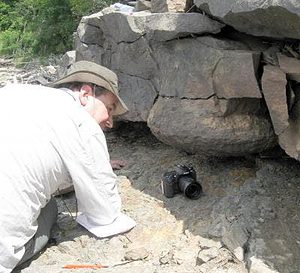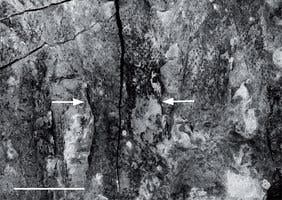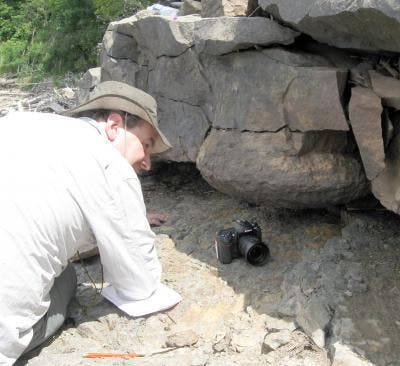
Last week we reported about a 300 million year old fossilized forest which was discovered underneath a coal mine in China. A highly remarkable find by all means, fact confirmed by the overwhelming response the story gathered from your part, the reader. If you found that interesting, wait until you learn about the oldest fossilized forest, dating back 385 million years ago in the Devonian period, located in the Catskill Mountains in upstate New York.
Ancient forest fossils were first discovered at the bottom of a quarry near the Gilboa Dam in the 1920. At the time, only sketchy information was recorded about the geological context of the fossil stumps, the soil the trees were growing in, and the spacing of trees bases. Soon after the discovery was made, the dam was opened and the quarry got backfilled. Thus, for almost a century scientists looking to study one of Earth’s most important artifacts were limited to some museum samples or a few specimens exposed in nearby streams.
May 2010 came as a godsend for the researchers, after the NYC Department of Environmental Protection closed the dam for maintenance and allowed paleontologists to dig up the quarry again. However, they only had two weeks to complete their job, after which the dam would be re-opened and the site flooded.
The researchers worked long days, first mapping the 4,000-square-foot site with a grid and then documenting it with digital photography, field notes, illustrations and specimen gathering.
“For the first time we were able to arrange for about 1,300 square meters to be cleaned off for investigation. A map of the position of all the plant fossils preserved on that surface was made,” Dr Chris Berry, Cardiff School of Earth and Ocean Sciences.

The earliest forest known to man
Beneath the quarry, the researchers found three new species of enormous plants. The first was the Gilboa tree or Eospermatopteris, a palm-like, tall tree with a crown of branches at the very top, once thought to be the only tree type in the forest since they were first excavated by quarry workers in the 1920’s. However, a new species were uncovered in the new dig-up, belonging to the progymnosperms family – giant plants, which seemed to lean against the Gilboa trees for support.This will enable more refined speculation about the way in which the evolution of forests changed the Earth
The researchers also found a fragment of a third type of tree, lycopsids, which would later dominate the Carboniferous period from about 360 million to about 300 million years ago. The lycopsids are an ancient group of non-seed plants represented today by low growing forms such as the “running pines” of the northern hardwood forests of New York.
An ancient ecosystem
In light of this latest, more thorough, discovery, paleontologists’ view concerning the site’s ancient ecosystem might have to change. Previous research claimed that underneath the quarry, there was once a swamp-like environment, however, considering complex specimens were uncovered in this latest expedition, it’s a lot more likely that the forest once stood in a flat coastal plain near an ancient shoreline. This will enable more refined speculation about the way in which the evolution of forests changed the Earth, considering the Devonian period marks the time in Earth’s global ecosystem when the transition from small, scattered vegetation to large-scale, tall forests took place.
“I’ve spent 20 years trying to imagine what these plants were like as individuals, and yet I really had no conception of them as an ecosystem,” Berry said. “Going to Gilboa and sitting in the middle of the forest floor, you could almost see them growing out of the ground. … The fossil forest came to life in front of my eyes in a way that has never happened before.”
The findings were published in the 1st of March edition of the journal Nature.
More about the ancient trees in the Gilboa quarry can be found in read at this interesting piece from the Why Files.









